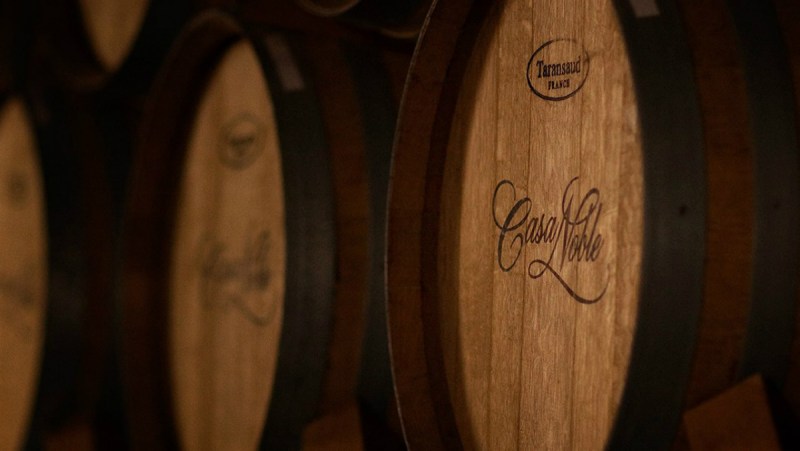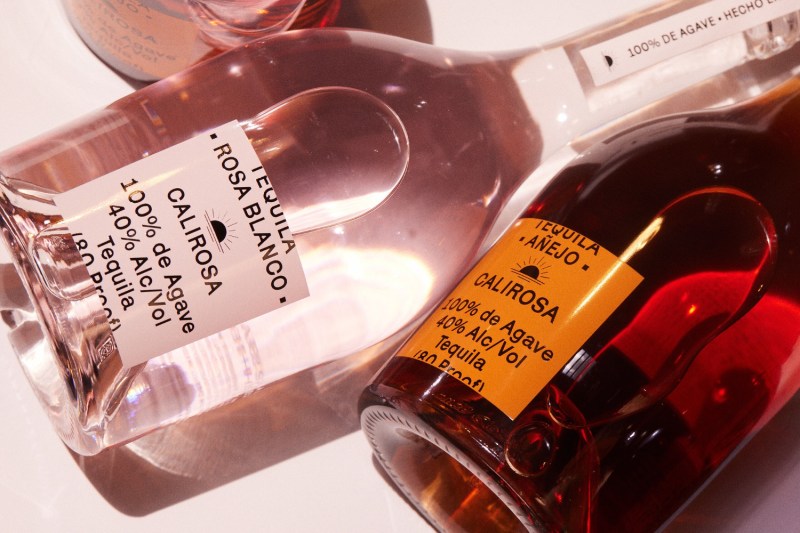As agave spirits continue their scorching sales trajectory in the U.S., it’s no wonder that we have more options than ever. Today, we’re treated to any number of excellent mezcals and tequilas ideal for sipping neat or mixing into cocktails. With that increase in diversity has come an uptick in the ways these distilled spirits are finished.
Borrowing a page or two from the playbooks of rum and certain other spirit makers, tequila manufacturers are looking to wine for inspiration. Producers are aging their brews in wine barrels to impart complexity and flavor never before seen in the category. The barrels, usually oak and formerly used to age red wine, add a bit of color and fruitiness to the tequila. They also round the spirit out, partly because of the balance that comes from time in the barrel but also because of the complementary flavor profiles of certain wine varietals.

Like rum, tequila typically arrives in un-aged and aged formats. Generally, it breaks down as follows: A blanco tequila is not aged or is done so minimally, usually two months or less. Reposado tequilas are aged anywhere from two months to a full year. Añejo tequilas are aged from one to three years. There are Extra Añejos as well that go beyond the three-year mark.
Tequila, when it’s aged, is usually done so in oak barrels, just like wine, so perhaps this union is not so farfetched. However, historically, many tequilas have mimicked other spirits and gone with American oak for aging (old Jack Daniel’s barrels are popular). Most wine producers prefer French oak for its delicate touch, meaning you end up with a wine that shows less of the wood’s influence and more of the fruit characteristics.
That tequila producers are opting for old wine barrels suggests they are after more finesse. The tequila will take on some of the characteristics of the wine but will also temper nicely because the wood has been used previously to hold wine. New oak barrels, by comparison, tend to produce those classic buttery, toasty, and vanilla elements, especially depending on their char level.
Broadly speaking, the longer the aging period, the smoother the spirit. Older spirits can fetch astronomical sums, as they’re prized for their layers of flavor and tremendous balance. You see it with scotch and bourbon, and you also see it with wines, namely bigger offerings from Napa or Bordeaux.
That’s the case with tequila too. As it gets older, it takes on some color, going from clear to straw to gold and beyond. It also takes on some richer notes, sometimes fruity and nutty. You can still mix with these older offerings, but going neat is likely the best way to enjoy the nuance, or at least with a barebones cocktail without a lot of other ingredients.

So back to wine barrel-aged tequilas. No brand in recent history has jumped on the movement quite like Calirosa. It ages its tequila in red wine barrels from California. “The residue left in the barrels has a significant impact on the color of our Calirosa Rosa Blanco liquid, creating that beautiful pink liquid we are known for,” said Lindsay Mark, vice president of marketing for the outfit. She says you get some of those wine-like notes on the palate, too. “You will notice unique aromas of strawberry, raspberry, and honey, and a flavor profile with hints of orange, cherry, and dark berry notes.”
Mark said it’s all about tying two age-old crafts on either side of a border together. “From the very beginning, our focus has been to bring together the best of Mexico and California by aging the finest 100% blue agave tequila in California’s prized wine barrels,” she said. “It’s about leading with innovation while staying true to the craft-minded processes behind both wine- and tequila-making.”
Calirosa isn’t the only show in town, as more are showing up on the horizon. Other producers worth checking out include El Mayor and its reposado tequila, which is finished for nine months in French oak chardonnay barrels. You get many of the classic characteristics of a barrel-aged Chardonnay, like oak, vanilla bean, and orchard fruit flavors. Cava de Oro is another tequila of note, particularly the Extra Añejo variety that’s aged for seven years in French red wine barrels. The result is a serious tequila worth reflecting over. It tastes of baked fruit, dried cinnamon, roasted nuts, and plenty of other tasty layers.
As tequila producers continue to explore wine fusions, it’ll be fun to see what other kinds of wine varietals they seek out while looking for finishing barrels. We’ve already seen compelling versions aged in old sherry casks, rum barrels, and now barrels formerly reserved for Bordeaux blends and other wines. We’re eager to see what comes of this hybrid-like method of creating an interesting agave spirit.
Editors' Recommendations
"tasty" - Google News
August 13, 2022 at 05:30AM
https://ift.tt/qkwHNUG
Tequila Meets Wine: A Tasty Union (Yes, Really!) - The Manual
"tasty" - Google News
https://ift.tt/HPQB68M
https://ift.tt/bk5j0MR
Bagikan Berita Ini














0 Response to "Tequila Meets Wine: A Tasty Union (Yes, Really!) - The Manual"
Post a Comment